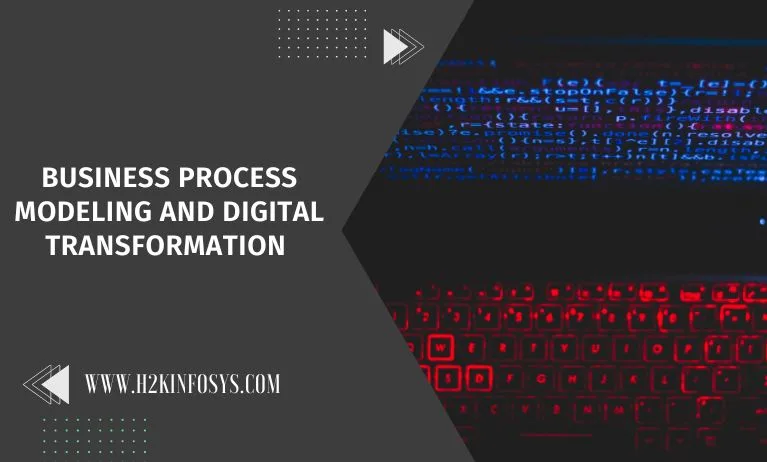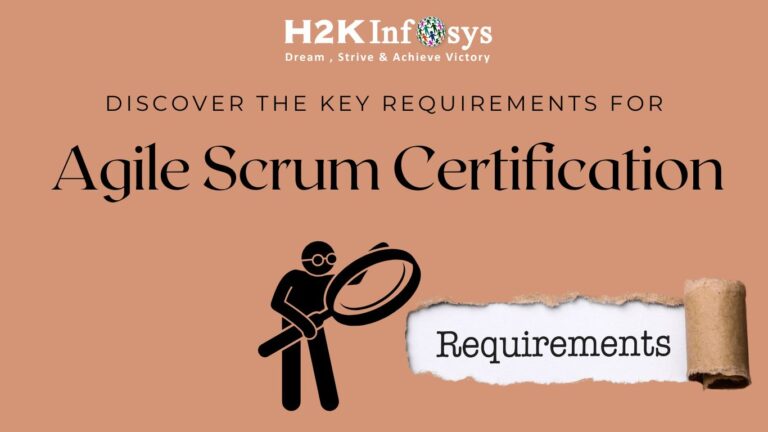Understanding what business process modeling is will help you better comprehend business process modelling. A business process is a set of actions that are taken by an organisation to finish a task or accomplish a goal. Business processes can be thought of as a set of interconnected events that take place over time, such as:
- Creating an account on a website.
- Performing the checkout procedure at a store.
- Completing a purchase order for a client’s product.
The aforementioned scenario serves as an illustration of the procedures that take place from the time a consumer places an order for a product until they reach the checkout stage. This illustration demonstrates how business process modelling functions. If you are a beginner in business analysis, then check out the business analysis online course to learn more.
What is Business Process Modeling?
Business process modelling is a technique for illustrating how work is distributed throughout a company. It can be used to pinpoint areas where automated processes could be implemented, assess how well current practices are being followed, and bring about digital transformation.

Your organisation will determine how you model your business processes, but the most crucial thing to make sure of is that you have a plan in place so that, in the event that something goes wrong, you can immediately identify the issue and implement solutions that would result in digital improvements.
What is Digital Transformation?
Digital transformation describes the process of utilising new technologies to enhance business processes. You can use a business process model to identify areas of your organisation where digital transformation can be used to increase productivity, efficiency, and profitability.
The relationship between Business process modelling and digital transformation
An approach to thinking about how to use technology to enhance your business is through business process modelling. It’s a terrific technique to determine where to start your digital transformation as well.
What business process modelling has to do with digital transformation may be a mystery to you. Business process modelling enables you to pinpoint the areas in which your business requires assistance, enabling you to move closer to your goal faster by highlighting any problems and indicating who will handle their resolution. Digital transformation is crucial because it enables you to see the larger picture, which is something that most businesses struggle with. They pay too much attention to minor things and lose sight of the bigger picture, which is typically a sign that they don’t know exactly what they’re attempting to do in the first place. By integrating digital transformation with your current business practices, you can make your organisation unique.
When executing digital transformation projects, it’s crucial to identify potential improvements and streamline existing processes, which may be done with the help of the business process model.
5 recommendations for business process modelling needed for digital transformation
Business process modelling is one of the essential pillars of digital transformation, as was already stated. It enables you to evaluate your current processes and spot any places where they might be strengthened, which can help you decide how to proceed with your project of digital transformation more effectively.
Here are 5 suggestions for getting started with business process modelling:
- Understand Your Current State: It’s crucial to comprehend how your procedures now operate before attempting to improve them. This entails carefully examining present procedures and identifying any places where they might be streamlined or enhanced.
- Identify the Key Goals: After you’ve determined where your processes need to be changed, what are the major objectives of those processes? The easiest approach to achieve this is to speak with those participating in the process and find out what their objectives are (as well as whether any deadlines are involved). Then, start by identifying potential changes using these aims as a guide.

- Identify All Possible Alternatives: You can start the process of identifying any alternatives once you’ve determined the objectives for each process and some potential improvements. Try brainstorming as many unique ideas as you can! This will help verify that each possibility has been considered.
- Ensure that the right individuals are involved in the process, including consumers and other stakeholders in addition to corporate employees. The more people who participate in the discussion about what works and what doesn’t, the better.
- Pay attention to the hidden costs of technological advancements. For instance, if you’re working with an external team, make sure they are aware of all the costs associated with recruiting them, such as travel charges.
Conclusion
Your ability to model your business operations effectively will determine how well your digital transformation goes. Incorrect implementation could result in a new system that is ineffective.
Before starting any project like this one, it is crucial to define success clearly so that everyone is on the same page. This will prevent anyone from becoming distracted while working to accomplish those goals.Last but not least, remember the things you learned from earlier initiatives to avoid doing them again. Everyone involved benefits because it makes future decisions better. Enroll in good BA training to learn more.





























